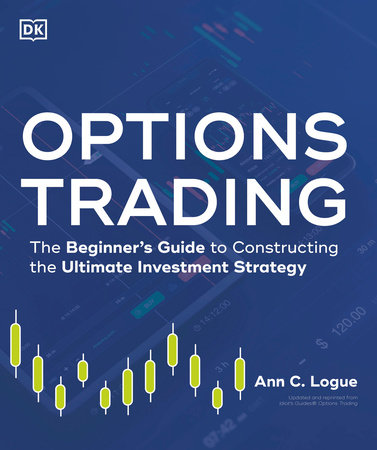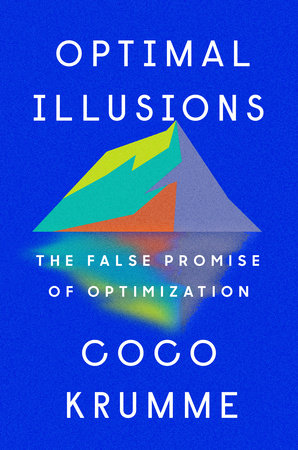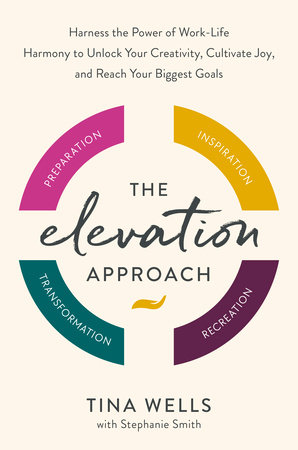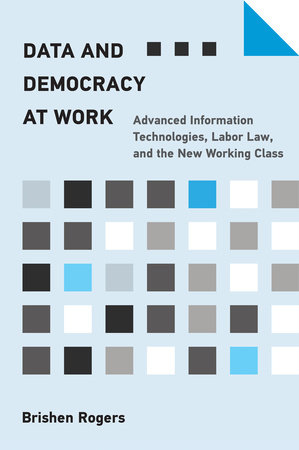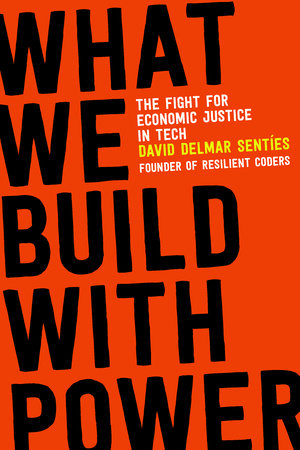Quick Summary
One sentence summary
“Option B” explores resilience in the face of adversity, offering insights into overcoming life’s challenges and finding strength in the aftermath of loss.
Big Idea
The central theme revolves around building resilience and finding a way forward after facing unexpected hardships, emphasizing the importance of embracing and adapting to life’s “Option B” when “Option A” is no longer available.
Five Key Ideas
- Facing Adversity Head-On
- Encourages acknowledging and confronting adversity rather than avoiding or denying it.
- Illustrates how individuals can develop resilience by accepting the reality of their situations.
- The Three P’s: Personalization, Pervasiveness, and Permanence
- Discusses the impact of these cognitive traps on our ability to bounce back from setbacks.
- Provides strategies to combat distorted thinking and foster a more resilient mindset.
- Building Resilience in Children
- Explores the role of parents and educators in helping children navigate and bounce back from life’s challenges.
- Highlights the importance of instilling resilience as a crucial life skill.
- Creating Supportive Communities
- Emphasizes the significance of social support in times of crisis.
- Shares stories and research on how communities can come together to provide strength and solace.
- Post-Traumatic Growth
- Examines the concept of growth following trauma and adversity.
- Explores how individuals can find renewed purpose and meaning in their lives after facing significant challenges.
Actionable Advice
- Practice Self-Compassion: Instead of self-blame, treat yourself with the same kindness and understanding you would offer to a friend facing a similar situation.
- Encourage Resilience in Others: Foster a culture of empathy and support within your community, workplace, or family to help others navigate challenges.
- Seek Professional Help: Recognize the importance of professional assistance, whether through therapy or counseling, in building resilience and coping with trauma.
About the Author
Sheryl Sandberg, renowned author and COO of Facebook, draws on personal experiences of loss and resilience. Adam Grant, an organizational psychologist, brings his expertise to the collaboration, offering a research-backed perspective on overcoming adversity.
Read Next
- “Lean In” by Sheryl Sandberg: Delve deeper into Sandberg’s insights on women in the workplace and leadership.
- “Originals” by Adam Grant: Explore Grant’s exploration of creativity, innovation, and the characteristics of non-conformists.
- “Grit” by Angela Duckworth: Understand the power of passion and perseverance in achieving long-term goals.
In Depth
Facing Adversity Head-On
Facing adversity head-on is about more than just acknowledging its existence; it’s an active decision to confront life’s challenges with resilience and courage. In “Option B,” Sheryl Sandberg and Adam Grant highlight the transformative power of facing adversity directly, steering away from the inclination to avoid or deny difficult situations.
The authors emphasize that acknowledging adversity is the first step towards resilience. Sandberg, drawing from her personal experiences, recounts the sudden loss of her husband and the emotional upheaval that followed. Instead of succumbing to despair, she chose to face the pain head-on, recognizing that denial only prolongs the healing process. Sandberg writes, “We plant the seeds of resilience in the ways we process negative events. After spending decades studying how people deal with setbacks, psychologist Martin Seligman found that three P’s can stunt recovery: personalization (the belief that we are at fault), pervasiveness (the belief that an event will affect all areas of our life), and permanence (the belief that the aftershocks of the event will last forever).”
Sandberg’s account exemplifies the importance of confronting the emotional toll of adversity. By acknowledging the pain and allowing herself to grieve, she set the stage for resilience and growth. This key idea is not just a psychological concept but a practical approach to navigating life’s inevitable challenges.
The authors argue that facing adversity head-on involves accepting the reality of the situation. It’s about understanding that life is unpredictable, and setbacks are an intrinsic part of the human experience. Sandberg and Grant provide actionable advice on how to implement this idea in daily life. They suggest practicing self-compassion, urging individuals to treat themselves with kindness and understanding rather than self-blame.
Sandberg’s narrative is a poignant reminder that facing adversity head-on is not about pretending everything is fine; it’s about acknowledging the pain, allowing oneself to grieve, and gradually rebuilding. It’s a testament to the strength that comes from embracing the reality of the situation rather than trying to escape it. As Sandberg reflects on her own journey, she notes, “Resilience comes from deep within us and from support outside us. It comes from gratitude for what’s good in our lives and what’s even better in the lives of others. It comes from acknowledging that setbacks are part of life and that we can grow from facing them.”
In essence, facing adversity head-on is a fundamental aspect of building resilience. It involves a shift in mindset, from viewing challenges as insurmountable obstacles to recognizing them as opportunities for personal growth. The authors encourage readers to adopt this perspective, fostering a resilience that not only helps navigate current hardships but also prepares for future uncertainties.
The Three P’s: Personalization, Pervasiveness, and Permanence
In “Option B,” Sandberg and Grant delve into the intricacies of the human mind during times of adversity, introducing the concept of the Three P’s: Personalization, Pervasiveness, and Permanence. These cognitive traps, as outlined by psychologist Martin Seligman, can significantly impact our ability to bounce back from setbacks.
Personalization is the tendency to believe that we are at fault for the challenges we face. It’s that internal voice blaming oneself for the unexpected twists of life. Sandberg recounts her struggle with personalization in the aftermath of her husband’s death, noting, “I was stuck in the first P—my initial thought was that Dave’s death was my fault.” This self-blame, a common response to adversity, can hinder the healing process.
Pervasiveness involves the belief that an adverse event will affect all aspects of our lives. Sandberg shares her own experience, illustrating how grief permeated every facet of her existence. The authors emphasize the importance of recognizing the boundaries of adversity, preventing it from overshadowing every aspect of life. Sandberg writes, “Not everything that happens to us happens because of us. Every time something goes wrong, some of the pain we feel is self-inflicted, and part of what makes that pain so intense is the shame we feel for inflicting it.”
Permanence is the conviction that the negative effects of an event will last forever. Sandberg reflects on her initial belief that the pain of losing her husband would never subside. This sense of enduring despair is a common cognitive distortion during difficult times. The authors stress the need to challenge this perception, recognizing that emotions evolve and wounds can heal.
The book provides practical strategies to combat these cognitive traps. Sandberg and Grant advise individuals to reframe their thinking, separating the self from the situation. They advocate for the power of resilience in acknowledging the limitations of personalization, pervasiveness, and permanence. As the authors aptly put it, “Taking back control begins with learning to reject the helplessness, transforming learned helplessness into learned optimism.”
Sandberg’s narrative serves as a poignant example of these cognitive traps and the subsequent journey towards overcoming them. By recognizing the Three P’s and actively working to counteract them, individuals can regain a sense of agency in the face of adversity. The authors’ insights offer a roadmap for navigating the complex terrain of the human mind during challenging times, reinforcing the idea that resilience is not just about bouncing back but also about transforming the way we perceive and respond to setbacks.
Building Resilience in Children
“Option B” extends its exploration beyond personal resilience to the crucial task of fostering resilience in children. Sandberg and Grant emphasize the pivotal role parents and educators play in shaping a child’s ability to navigate life’s challenges.
The authors contend that shielding children from all adversity is neither realistic nor beneficial. Instead, they advocate for equipping children with the skills to bounce back from setbacks. Sandberg shares the story of helping her children cope with the loss of their father, illustrating the importance of open communication. She notes, “I decided to be honest. I wasn’t going to lie to my kids. I told them that Dave died, and I explained that they could still talk to him even though he wasn’t alive.” This candid approach allowed her children to begin processing the grief and building resilience.
The book introduces the concept of the “three Ps” in the context of children’s resilience—Personalization, Pervasiveness, and Permanence. Sandberg and Grant argue that addressing these cognitive traps in children is paramount. They emphasize the role of adults in helping children understand that challenges are not their fault, won’t affect every aspect of their lives, and won’t last forever.
Sandberg’s experience with her own children serves as a poignant example of the delicate balance between protecting and preparing them for life’s adversities. The authors stress the importance of age-appropriate honesty and open communication, acknowledging that children, even at a young age, can begin to develop resilience when guided with care. This key idea extends beyond the personal narrative, offering actionable advice for parents and educators alike.
The authors advocate for creating environments that encourage resilience in children, where mistakes are viewed as opportunities to learn and setbacks are seen as part of the journey. They suggest fostering a growth mindset, emphasizing effort and perseverance over innate abilities. Sandberg reflects on her own parenting journey, stating, “Children are not born with a fixed amount of resilience. Like a muscle, it can be built up.”
The book provides practical tips for parents and educators, emphasizing the importance of modeling resilience and coping strategies. By creating an atmosphere that encourages children to express their emotions and learn from challenges, adults can play a pivotal role in building a foundation of resilience. Sandberg and Grant underline the significance of this task, recognizing that resilience in childhood lays the groundwork for a lifetime of navigating the inevitable ups and downs of life with strength and adaptability.
Creating Supportive Communities
“Option B” underscores the significance of communal support in times of crisis, asserting that resilience is not solely an individual endeavor but a collective one. Sandberg and Grant explore the transformative power of creating and sustaining supportive communities during challenging times.
In recounting her own journey through grief, Sandberg highlights the pivotal role her community played. “The relationships you build—in your family, with friends, with your coworkers—will be your saving grace. And you need to build them intentionally and meaningfully, which, in turn, requires time and effort.” This insight underscores the book’s central premise: that navigating adversity is not a solitary pursuit but a collaborative effort.
The authors delve into the concept of communal resilience, emphasizing the role of empathy and understanding. They argue that a compassionate community provides a space for individuals to share their experiences and find solace in shared humanity. Sandberg and Grant provide examples of communities coming together to support one another, showcasing the strength derived from collective empathy.
The book introduces the idea of the “platinum rule,” an extension of the golden rule. The platinum rule encourages treating others as they want to be treated. Sandberg and Grant argue that understanding and respecting individual needs fosters a more supportive and resilient community. They write, “Instead of following the Golden Rule—treating others as we would like to be treated—we can follow the Platinum Rule: treating others as they would like to be treated.”
The narrative extends beyond personal anecdotes to explore research and examples of communities facing adversity. Whether it’s a workplace, a neighborhood, or an online group, the authors contend that a supportive community is a cornerstone of resilience. The book offers actionable advice on how to cultivate such communities, emphasizing the importance of empathy, active listening, and a willingness to provide and seek help.
Sandberg and Grant challenge the notion that vulnerability is a sign of weakness, asserting that expressing one’s needs and struggles within a community fosters connection and strength. Sandberg’s experience exemplifies this as she navigated grief in the workplace. The authors emphasize the need for organizations to create cultures that encourage open communication about personal challenges. They argue, “Building resilience in individuals and communities requires creating an environment that values and supports every member.”
In essence, creating supportive communities is not just a key idea in “Option B”; it is a rallying call to recognize the interconnectedness of human experiences. The book challenges the notion that resilience is a solitary feat, highlighting that a network of supportive relationships is an invaluable resource during life’s storms. It serves as a reminder that in building resilience, we don’t just lean on our own strength but on the collective power of those around us.
Post-Traumatic Growth
“Option B” explores the transformative concept of post-traumatic growth, asserting that resilience isn’t just about bouncing back to the pre-crisis state but also about evolving into a stronger, more enlightened version of oneself in the aftermath of adversity.
Sandberg shares her personal journey of post-traumatic growth, reflecting on how her perspective on life and priorities shifted after the sudden loss of her husband. She notes, “I gained a more profound understanding of what it is to be a mother, both through watching my children respond to the tragedy and through my attempts to help them heal. I gained a more profound understanding of what it is to be a friend, through the depths of feeling lonely and through the warmth and comfort of those who supported me.” This example exemplifies the book’s central idea that growth can emerge from the most challenging circumstances.
The authors delve into the psychological concept of post-traumatic growth, emphasizing that individuals can find new meaning, purpose, and a deeper appreciation for life after facing adversity. Sandberg and Grant provide insights into the factors that contribute to post-traumatic growth, including finding personal strength, gaining a new perspective on life, and developing a greater sense of connection with others.
The book introduces the concept of the “three Ps” again in the context of post-traumatic growth. Sandberg shares her journey of challenging personalization, pervasiveness, and permanence in the aftermath of loss. She notes, “The seeds of resilience are planted in the way we process negative events. At some point, often early on, we have to decide whether to give in to feelings of helplessness and victimization or to find a way to reframe our reality. And though it may sound trite, the key is not to be defined by our pain but to be transformed by it.”
The narrative moves beyond personal anecdotes to explore research and examples of individuals and communities experiencing post-traumatic growth. It highlights stories of people who, after facing significant challenges, found new purpose, deeper connections, and a renewed appreciation for life. The book challenges the notion that growth is only possible in the absence of adversity, asserting that resilience isn’t just about weathering the storm but about using it as a catalyst for positive change.
Sandberg and Grant provide actionable advice for individuals seeking post-traumatic growth, emphasizing the importance of self-reflection, seeking support, and finding meaning in the midst of hardship. The key idea of post-traumatic growth resonates as a testament to the human capacity for resilience, illustrating that even in the darkest moments, there exists the potential for profound personal transformation. It invites readers to see adversity not just as an obstacle to overcome but as a catalyst for personal and collective growth.
Actionable Advice
- Embrace Self-Compassion:
- Treat yourself with kindness, understanding that setbacks are a part of life.
- Quote from the book: “We plant the seeds of resilience in the ways we process negative events.”
- Foster Resilience in Others:
- Cultivate a culture of empathy and support within your community or workplace.
- Encourage open communication about challenges and triumphs.
- Seek Professional Help:
- Don’t hesitate to reach out for therapy or counseling when facing significant adversity.
- Recognize the importance of professional guidance in building resilience.
- Practice Age-Appropriate Honesty with Children:
- Help children navigate challenges by being truthful about difficult situations.
- Encourage open communication and provide a safe space for expression.
- Cultivate Supportive Communities:
- Actively build and nurture relationships with family, friends, and colleagues.
- Quote from the book: “The relationships you build will be your saving grace.”
- Apply the Platinum Rule:
- Treat others as they want to be treated, fostering a culture of respect and understanding.
- Quote from the book: “Treating others as they would like to be treated.”
- Recognize the Potential for Post-Traumatic Growth:
- Reframe adversity as an opportunity for personal transformation.
- Seek meaning and positive change in the aftermath of challenges.
- Cultivate a Growth Mindset:
- View mistakes and setbacks as opportunities to learn and grow.
- Emphasize the importance of effort and perseverance over innate abilities.
About the Author
Sheryl Sandberg, born in 1969, is an American business executive, author, and advocate. She served as the Chief Operating Officer (COO) of Facebook, making significant contributions to the platform’s growth. Sandberg is renowned for her work in promoting women’s leadership and empowerment in the workplace. Before joining Facebook, she held key positions at Google and the U.S. Department of the Treasury.
Tragically widowed in 2015, Sandberg’s personal journey through grief became the foundation for her collaborative work with Adam Grant in “Option B,” a book exploring resilience and overcoming adversity. Her writing is marked by a blend of personal experience and research-backed insights.
As an advocate for gender equality, Sandberg authored “Lean In,” a bestseller discussing challenges women face in the workplace. Her beliefs center around the idea that individuals, irrespective of gender, can overcome challenges and find strength in the face of adversity. Sandberg continues to be a prominent voice in the fields of leadership, resilience, and gender equality, using her platform to inspire positive change in both professional and personal spheres.
Read These Next
You might like these similar books:
- “Lean In” by Sheryl Sandberg
- “Originals” by Adam Grant
- “Grit” by Angela Duckworth
- “The Power of Habit” by Charles Duhigg
- “Mindset: The New Psychology of Success” by Carol S. Dweck
FAQ
Q: What is “Option B” about?
A: “Option B” explores resilience in the face of adversity, offering insights on overcoming life’s challenges and finding strength in unexpected circumstances.
Q: Who are the authors of “Option B”?
A: The book is co-authored by Sheryl Sandberg, the COO of Facebook, and Adam Grant, an organizational psychologist and author.
Q: Is this book only for those who have faced major setbacks?
A: No, while it draws on personal stories of overcoming loss, “Option B” is for anyone seeking insights on resilience and navigating life’s inevitable challenges.
Q: How does the book approach the topic of resilience?
A: It emphasizes facing adversity head-on, understanding cognitive traps, building resilience in children, creating supportive communities, and exploring the concept of post-traumatic growth.
Q: Are there actionable takeaways from “Option B”?
A: Yes, the book provides actionable advice, including practicing self-compassion, fostering resilience in others, seeking professional help, and cultivating supportive communities.
Q: Is “Option B” suitable for a workplace setting?
A: Absolutely. The book discusses resilience in various contexts, including the workplace, offering valuable insights for individuals and organizations.
Q: Can I benefit from “Option B” even if I haven’t read “Lean In” by Sheryl Sandberg?
A: Yes, “Option B” stands on its own and doesn’t require prior knowledge of “Lean In.” It addresses resilience more broadly.

